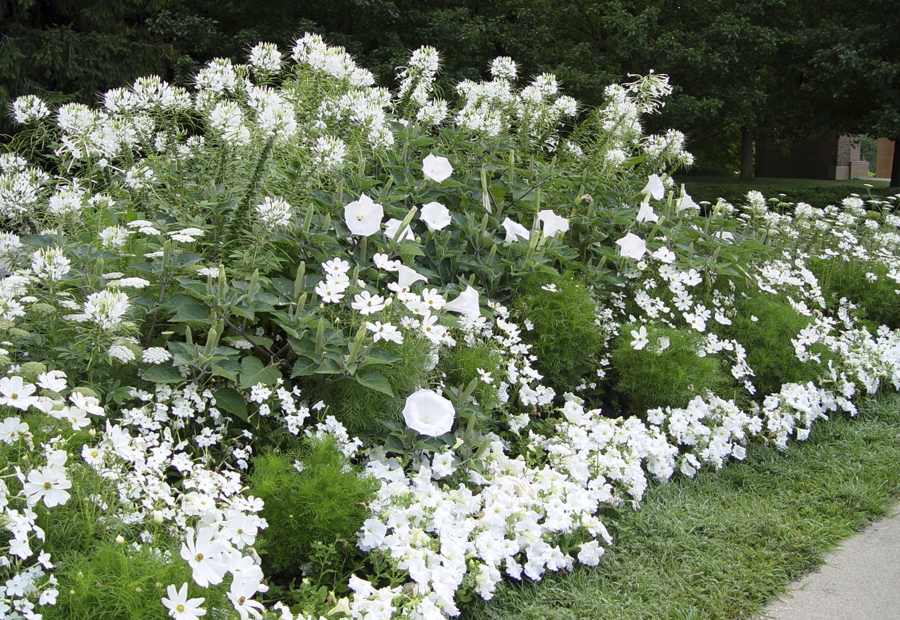Planning this year’s garden? My guess is you’re envisioning plants bathed in daylight.
But the problem is that by nightfall, when the sun has set and you’re ready to kick back at home, you won’t be able to see and fully enjoy the fruits of your gardening labor without flooding the yard with artificial lighting. And that’s not relaxing at all.
Instead, consider planting a moon garden specifically designed to be enjoyed by the light of the moon.
Plants with silver, variegated or bright foliage, white or light-colored flowers, or blooms that open only at night are ideal choices for a moon garden, as are highly fragrant plants. Plant them along a walkway or near your deck or patio, where you can enjoy them up close, or within view of a window.



